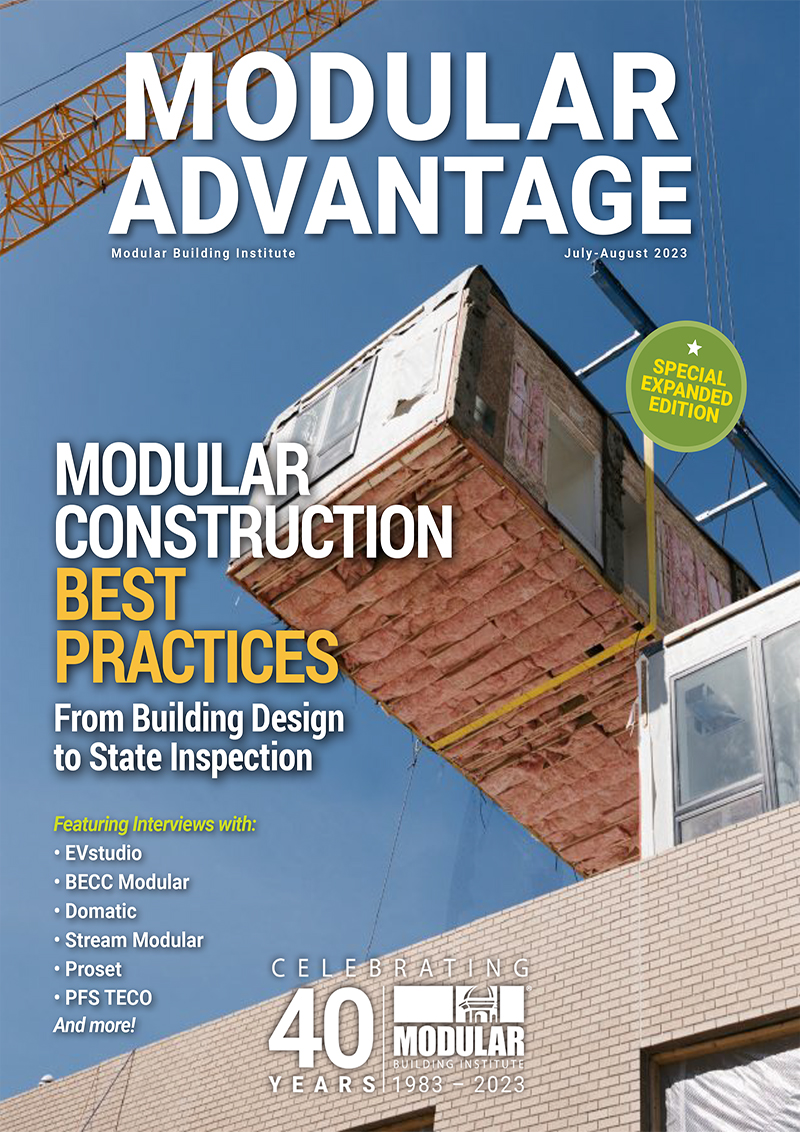In this issue of its bi-monthly Modular Advantage magazine, The Modular Building Institute continues the industry’s tradition of education by highlighting each step of the modular building process and offering best practices and lessons learned.
Modular Advantage: July-August 2023
The Mountains, Hills, and Valleys of Material Prices
It all started with a global pandemic. With governments urging people to stay at home and the global economy entering a sharp downturn, many economic activities were interrupted.
This was particularly true in the context of supply chains as workers generally could not supply effort remotely in manufacturing and distribution contexts and were told to physically isolate as their factories idled.
The pandemic followed decades of moving to just-in-time inventory practices. With factories temporarily shuttered and inventories quickly depleted, the supply of various
items was constrained.
Then the economy reopened, albeit in fits and starts. Demand for various items surged as consumers looked to spend massive accumulation of savings as vaccinations become
more commonplace.
The Cost of a Dated Education System to Our Workforce
It’s 5:30 in the morning at Mayfair School and Evin Jarrett is in his classroom preparing for the students who will begin trickling into his room around 6 am. This marks the beginning of his normal 12-hour day as he provides a place of refuge for students who are home alone early in the morning or after school.
Throughout the day there is constant knocking on his door – kids just dropping by to say “Hi”, to give him a hug, or begging him to let them hang out in his classroom. Some of them are skipping lunch and some are trying to skip other classes to be there, but one thing is very clear… kids desperately want to be in Mr. Jarrett’s middle school construction trades class.
His phenomenal hands-on learning experience serves 4th through 8th graders in a Title 1 school in Philadelphia. Once Evin feels a class has a solid understanding of safety, they are able to move on to learning to use power tools, basic plumbing (including sweating pipes) and electrical, masonry, framing, as well as introductions to technology and offsite construction.
Modular and Off-Site Construction: Risk Questions, Scenarios, and Suggestions
Thanks to our friends at MODLOGIQ, we are proud to announce ourselves as a new member of the Modular Building Institute. Thank you for the warm welcome at World of Modular in Las Vegas last April.
We hope to establish long-term, trusting relationships with MBI members, and we look forward to participating in the upcoming expos and the World of Modular in 2024. We offer the following thoughts as an introduction to Seubert & Associates, Inc.
Lean Construction – A Tool to Drive Productivity
As a Lean and Six Sigma Leader, I have highlighted below the importance of using Lean tools and inculcating the culture to address productivity issues facing modular construction.
According to a McKinsey report, the construction sector overall accounts for a significant 13% of the global GDP. However, despite its substantial contribution, the sector’s annual productivity growth has only witnessed a meager 1% increase over the past two decades.
This starkly contrasts with the 2.8% growth observed in the world economy and the 3.6%
growth seen in the manufacturing sector. Additionally, modular construction could claim $130B of the U.S./Europe market by 2030, saving $22B annually and bridging a $1.6T productivity gap.
Based on these findings, it becomes crucial for modular industries to prioritize operational efficiency to deliver maximum value to their customers.
Read the latest edition of MBI’s Modular Advantage magazine to find out more. Subscribe at modular.org today.



